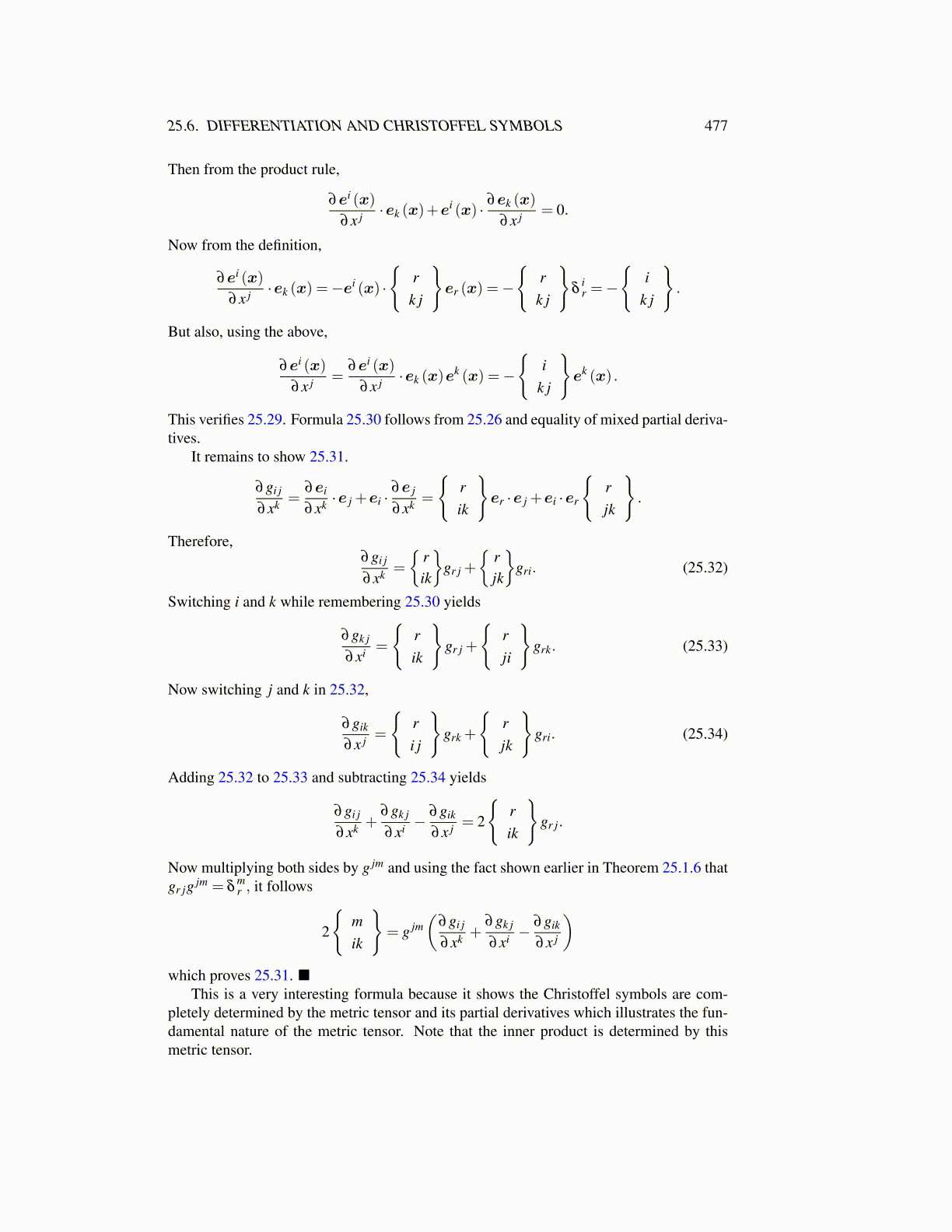
25.6. DIFFERENTIATION AND CHRISTOFFEL SYMBOLS 477
Then from the product rule,
∂ei (x)
∂x j ·ek (x)+ei (x) · ∂ek (x)
∂x j = 0.
Now from the definition,
∂ei (x)
∂x j ·ek (x) =−ei (x) ·
{r
k j
}er (x) =−
{r
k j
}δ
ir =−
{i
k j
}.
But also, using the above,
∂ei (x)
∂x j =∂ei (x)
∂x j ·ek (x)ek (x) =−
{i
k j
}ek (x) .
This verifies 25.29. Formula 25.30 follows from 25.26 and equality of mixed partial deriva-tives.
It remains to show 25.31.
∂gi j
∂xk =∂ei
∂xk ·e j +ei ·∂e j
∂xk =
{rik
}er ·e j +ei ·er
{rjk
}.
Therefore,∂gi j
∂xk =
{rik
}gr j +
{rjk
}gri. (25.32)
Switching i and k while remembering 25.30 yields
∂gk j
∂xi =
{rik
}gr j +
{rji
}grk. (25.33)
Now switching j and k in 25.32,
∂gik
∂x j =
{ri j
}grk +
{rjk
}gri. (25.34)
Adding 25.32 to 25.33 and subtracting 25.34 yields
∂gi j
∂xk +∂gk j
∂xi −∂gik
∂x j = 2
{rik
}gr j.
Now multiplying both sides by g jm and using the fact shown earlier in Theorem 25.1.6 thatgr jg jm = δ
mr , it follows
2
{mik
}= g jm
(∂gi j
∂xk +∂gk j
∂xi −∂gik
∂x j
)which proves 25.31. ■
This is a very interesting formula because it shows the Christoffel symbols are com-pletely determined by the metric tensor and its partial derivatives which illustrates the fun-damental nature of the metric tensor. Note that the inner product is determined by thismetric tensor.